Our top picks
Best Overall: Silentnight Healthy Growth Starry Natural Pocket Mattress
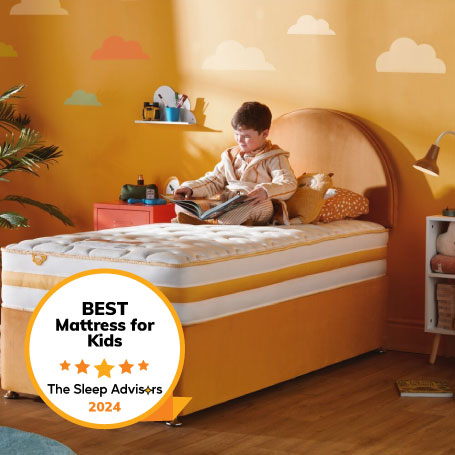
As they wriggle around in the night, they’ll adapt to their posture and sleeping position to ensure they are supported and comfortable. The mattress is designed with their development in mind to encourage healthy growth. This is why we have awarded this as the Best Mattress for Kids 2024.
Not only is it supportive, but it uses British wool to enhance breathability. It’s the ideal material to keep your child cool throughout the Summer and warmer in the Winter, regulating their body temperature whatever the season. The whole mattress is covered in a quilted sleep surface with an airflow border to keep them feeling refreshed.
Of course, for your little one, you will want something that’s clean, safe and fresh – and this one is naturally hypoallergenic, foam and chemical treatment free.
- Size: Single
- Type: Hybrid
- Warranty: 5-year guarantee
- Depth: 27cm
- Firmness: 5/10
- Trial: 60-night
Advantages
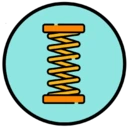
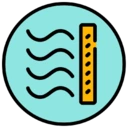

Disadvantages

Best Eco-Friendly: Panda Hybrid Bamboo Mattress Pro
This mattress from Panda is arguably one of the most complete mattresses for kids under the age of 5. It's a six-layer, bamboo/foam mattress that uses several patented technologies like Hydro Foam and AirFlow Foam to provide the ultimate comfort, stability, support and breathability.
On top of all that, we're looking at a mattress with a hypoallergenic cover and a waterproof layer – making it ideal for small children who still occasionally wet the bed. All in all – this is a great all-around product.
- Size: Single
- Type: Hybrid
- Warranty: 10-year guarantee
- Depth: 27cm
- Firmness: 7/10
- Trial: 100-nights
Advantages



Disadvantages

Best Value: JAY-BE Simply Foam Free Kids Mattress
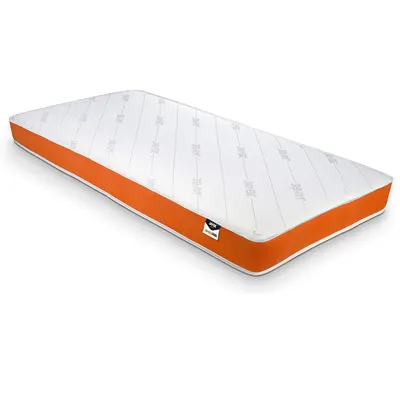
This beautiful, two-coloured mattress will be your kids' favourite thing in the room – after all the toys and fun stuff, of course. This hybrid mattress brings a lot to the table. The innerspring layer provides great support, even for teenagers and the memory foam makes it quite comfortable.
In addition to those two, we have a sustainable, eco-friendly, e-Fibre comfort layer for moisture and temperature regulation, as well. All in all – a solid, all-around product.
- Size: Single, Shorty
- Type: Spring
- Warranty: 5-year guarantee
- Depth: 16cm
- Firmness: 5/10
- Trial: N/A
Advantages



Disadvantages

Best Design: SnuzSurface Max Junior Mattress
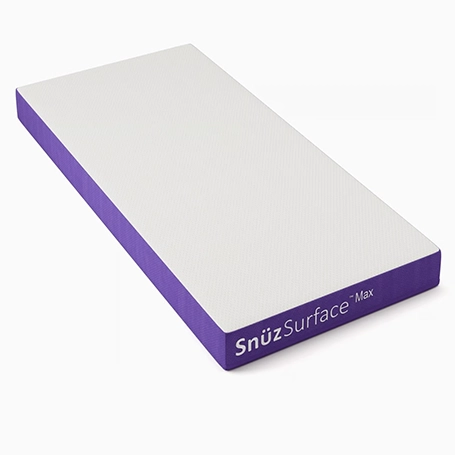
The SnuzSurface Max Junior Mattress can see your little one through their childhood – from toddler up to 13 years of age. It’s a single-sided, pocket sprung mattress that can stay with them as they transition and grow from a toddler to a teen. This is a super supportive mattress, thanks to the adaptive pocket springs throughout.
It features a removable, machine washable cover with a waterproof surface and an anti-dust mite barrier. This is everything you need from a kids mattress to ensure they have a comfortable and clean night’s sleep. The cover is also great for breathability with the 3D mesh surface.
- Size: Small single
- Type: Pocket spring
- Warranty: 5-year guarantee
- Depth: 16cm
- Firmness: 6/10
- Trial: N/A
Advantages



Disadvantages

Best Quality: Simba Hybrid Kids Mattress
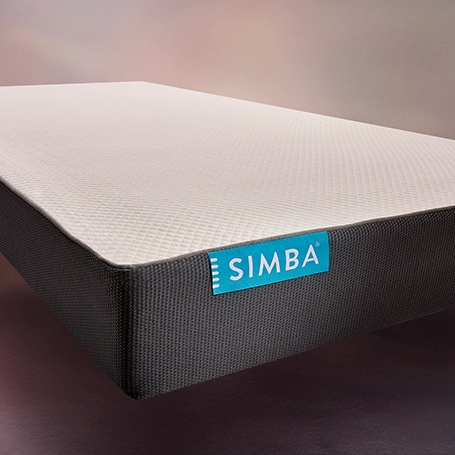
They use the same technology in their full size mattresses as they do the kids ones, so you know they are going to be of high quality. You’ll get the same tailored support and responsive comfort.
This mattress will adapt and change with your little one as they grow so they will always have the correct support for their weight and shape. The Kids Mattress is suitable for those three and up – perfect for anyone in a single sized bed and even bunk beds.
Simba uses their Aerocoil spring layer with a cooling graphite foam, high definition foam and a foam support base (all of which are CertiPUR). To top it off, it has a breathable and hypoallergenic knitted cover so they can sleep comfortably.
Take a look at our full Simba Hybrid Kids Mattress review.
- Size: Single
- Type: Hybrid
- Warranty: 10-year guarantee
- Depth: 16cm
- Firmness: 7/10
- Trial: 200-nights
Advantages



Disadvantages


What to consider when buying the best mattress for kids?
Before we get into our picks, we need to tell you more about the defining features of a mattress. As you already know, not all mattresses are the same – just like not all kids are the same. On that note, here are some of the key features we've paid special attention to when we were making our list
Type of mattress
The type of mattress defines the mattress in more ways than one. It defines how firm or soft the mattress is, it defines how bouncy or isolating it is, it defines whether it gets hot or not and so much more.
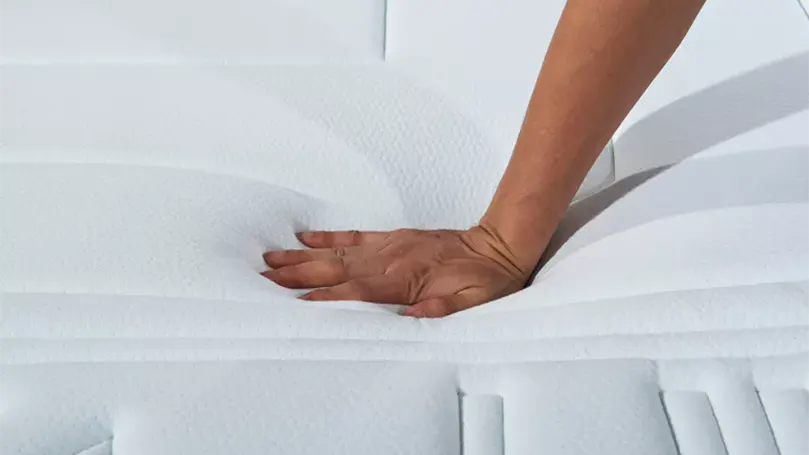
In general, there are four main types of mattresses – memory foam, innerspring, latex and hybrid. In addition to these four, we can find airbeds, as well, but those aren't nearly as good or as popular as the main four.
Size
As you might've guessed, there is no “right” mattress size for your child. Your kid will outgrow the cot mattress and grow into a regular-sized one, so it's important to choose a mattress accordingly.
The sizes of these mattresses vary quite a lot, but in most cases, you'll look for a small single or a small double, unless you’re buying a mattress for a child under the age of five, at which point you should consider even smaller form factors.
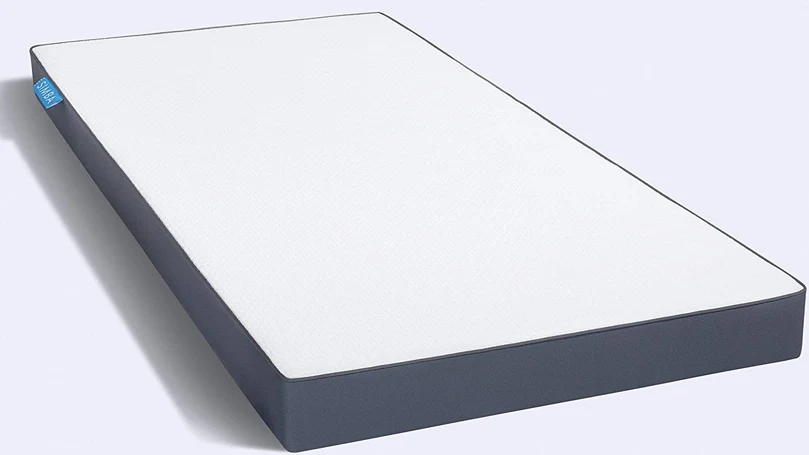
When choosing the right size, you should look into the future, especially if the kids are very young. They’ll grow quickly and you wouldn’t want to waste a perfectly fine mattress after only a year or two.
Kids’ sleeping positions
Kids sleeping position will greatly affect which kind of mattress you go for. In this case, we’re talking mostly about the mattress type.
For example, children sleeping on their backs generally have it easier when it comes to mattresses as pretty much any level of firmness will be satisfying, so you can choose any of the four types we mentioned before.
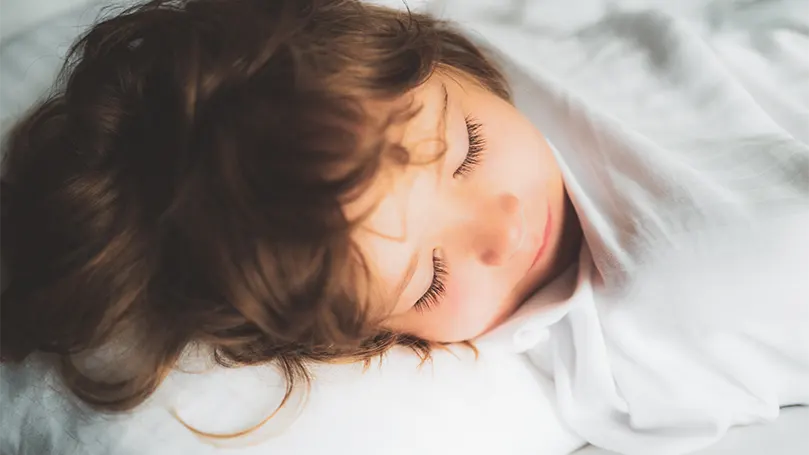
On the other hand, if your kid sleeps on the side, they need a softer mattress, so you should probably steer in the memory foam direction to allow for better contouring and alignment during the night.
Finally, if your child's a stomach sleeper – a medium-firm innerspring or a hybrid should do the trick.
Contouring
Contouring refers to mattresses' ability to adapt to the kid's body. Naturally, the better the mattress contours around the body – the better it distributes weight and relieves the pressure from sensitive areas like hips and shoulders. Once again, memory foam mattresses are quite good at this, but hybrids can also do a pretty sound job.
Now, kids usually don't suffer from sleep-related aches and pains, but they do grow and that can hurt quite a bit. In those situations, mattresses for kids can come quite in handy in relieving the child from the annoying growing pains.
Additionally, a contouring mattress can replicate a hug feeling, making it easier for your child to fall asleep on their own.
Motion isolation
Motion isolation can be quite useful if your kids are sharing a bed or if your kid’s just a restless sleeper.
In a case where your kids sleep together, it can be quite beneficial if they can't feel the movement of the other kid. They won't wake up during the night and they'll get up in the morning feeling fresh and restless.
Related reading:
- Restless sleep – 101 guide
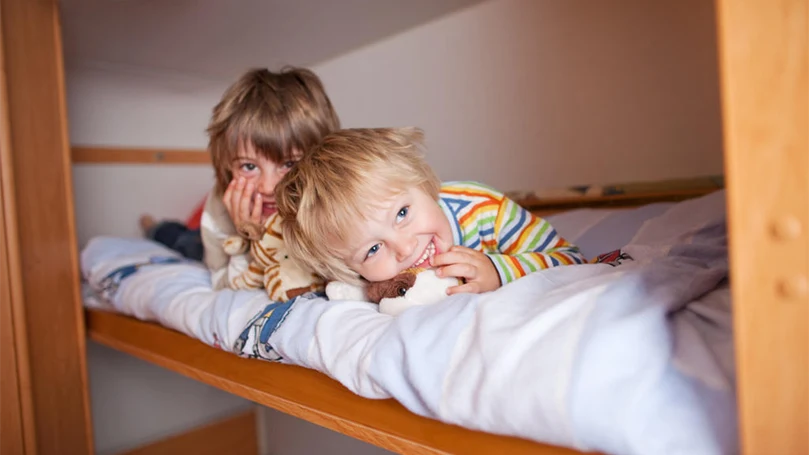
Any kind of medium soft mattress will be good at this, regardless of the type, but pocket sprung and memory foam mattresses are known to be the best at motion transfer isolation.
Firmness
The firmness of the mattress is one of the features that’s partially subjective, but still, there's a general set of rules that work pretty much all the time. Namely, the firmness of the mattress should be chosen, at least when it comes to kids, based on their age and sleeping position.
When they’re very young, under the age of 3, the mattress should be as firm as possible, to prevent any mishaps from happening. Later on, you can pay attention to how your child sleeps and choose accordingly. In general, memory foam mattresses are the softest and innerspring mattresses are the firmest.
Edge support
Edge support in mattresses is very important when the kids are transitioning from a cot to a regular bed. Since regular beds don't have their sides up as a cot bed does, kids will need some form of “edge” in order to feel secure laying on the mattress.
A soft, mellow edge might give out the feeling that they'll fall off the bed if they move too close to the edge, which might make your kid insecure and frightened to sleep alone in the bed. However, edge support is not only about a “feeling”. A quality, firm edge will offer substantially more support to anyone in bed while also making it easier for kids to get in and out of bed.
Cooling properties
Some mattresses trap heat and those are the ones you ideally want to avoid unless your kid gets very cold during the night. But even then, we'd suggest trying a new blanket or upping the temperature in the room.
A quality mattress for kids should dissipate heat, not trap it. if a kid gets warm or sweaty during the night, the last thing you want is the mattress making it even worse. In general, latex and hybrid models are the best at temperature regulation, followed by the innerspring, with the foam mattresses in the last place. However, many modern memory foam mattresses for kids have temperature-regulating properties, as well.
Tips for buying and using the best mattress for kids
Before we move on to our top picks, we should probably stop and take a look at some additional tips for buying and using mattresses for kids.
First of all, you don’t have to break the bank to buy a mattress. Even though higher-quality models will come at a higher cost, keep in mind that your child grows and that they won’t use the same mattress for 10 years like an adult might do.
Next up, if you’re not certain whether to get a soft or firm mattress – get a firmer one. You can always use a mattress topper to make a mattress more comfortable, but you can’t make it firmer and more supportive.
Finally, if your child’s a light sleeper, you might want to choose memory foam or a quality hybrid mattress. Most mattresses for kids won’t make too much noise, but just to be sure, avoid getting traditional innerspring mattresses for your kid.
- Don’t overspend on a mattress
- When in doubt – choose a firmer
- Avoid innerspring mattresses if your child’s a light sleeper.
The advantages of owning the best mattress for kids
As we’ve said in the beginning, sleeping on a quality mattress is especially important for kids. Here’s why.
First of all, a quality mattress usually translates to quality sleep and we all know how important sleep is for children and their development. Depending on their age, kids usually need somewhere between 9 to 13 hours of sleep, per day.
Next up, kids, just like adults, can suffer from allergies. Therefore, a quality, hypoallergenic mattress can help alleviate their symptoms.
Finally, keeping the body properly aligned is very important at an early age. It's been shown that an appropriate sleeping position lowers the chance of spinal deformities and helps the body develop in the right way.
- Improves sleep quality
- Can help with allergies
- Helps with the development.
Spread the word
FAQs about your new mattresses for kids
Finally, we went online to check if there are some questions that needed answering and we haven’t covered them so far. Sure enough, there were a few, so, let’s hear them out.
In general, you’d ideally look for a medium-firm foam or a hybrid mattress for kids over the age of 5 and a firm memory foam mattress for younger children.
Ideally, we’d recommend using low-profile mattresses for kids, no more than 5 inches thicker.
The frame will dedicate how big of a mattress you can buy, especially if you're shopping for a cot or bunk beds.



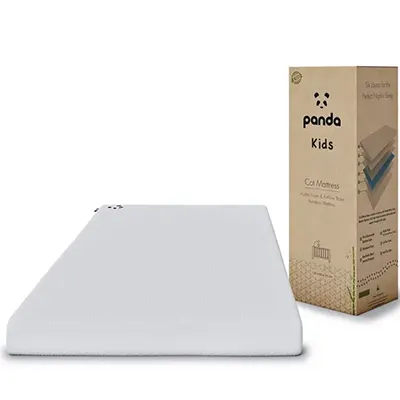

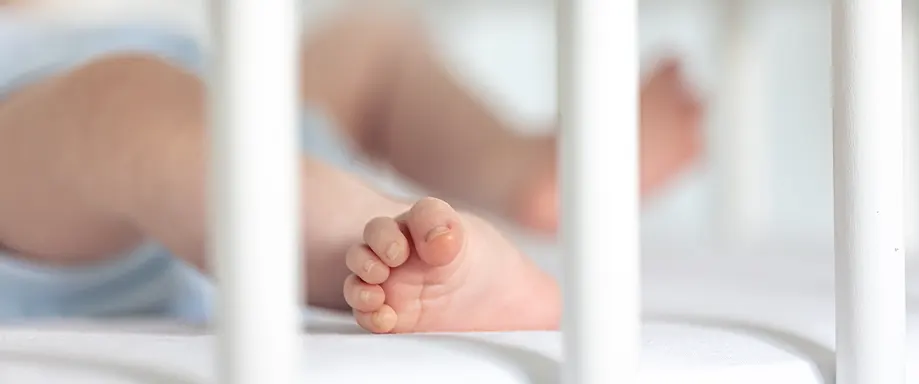











There are no comments yet
"*" indicates required fields